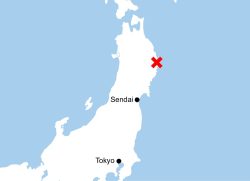15:59 JST, July 20, 2024
Major questions remain to be answered about the Hyogo prefectural government’s response to an official’s accusations of wrongdoing by the governor. The whistleblower was disciplined and the matter was not fully investigated. This is a problem that could shake the whistleblowing system.
Hyogo Gov. Motohiko Saito was accused of misconduct by a senior prefectural official. The official mailed a letter of accusation to the media and other organizations in March. He sent the same accusations to the prefectural government’s contact section in April in accordance with the whistleblowing system.
The accusations covered seven items, including the governor’s receipt of goods and workplace bullying. In response, the governor immediately denied the accusations, calling them “a pack of lies,” and removed the official from his senior position.
Also, the prefectural government claimed it had conducted its own investigation and determined that the contents of the accusation document were groundless. It suspended the official from work for three months. The official died this month, in what is believed to be a suicide.
The Whistleblower Protection Law prohibits any mistreatment of whistleblowers due to their whistleblowing. The prefectural government should have treated the official as a whistleblower and protected him. The prefecture’s handling of the matter is suspected to have violated the law and can only be called inappropriate.
After the official was hit by the punitive measures, the prefectural assembly established a committee based on Article 100 of the Local Government Law, which gives strong investigative authority to such committees, on the grounds that the probe by the prefectural government would not be impartial.
Meanwhile, the prefectural government has said it will also soon set up a third-party organization to further investigate the governor’s alleged misconduct. In addition to thoroughly scrutinizing the content of the accusations, it is also necessary to examine the handling of the matter by the prefectural government, which unilaterally punished the official.
All of Japan’s 47 prefectural governments have established whistleblowing contact sections. However, only 29 prefectures have such sections outside the prefectural government, such as at a lawyer’s office. The Hyogo prefectural government is one of those that does not have a contact section outside of the prefectural government. Nearly 30% of municipal governments do not have whistleblowing contact sections at all.
Administrative bodies are also expected to serve as contact points for receiving whistleblower complaints of corporate wrongdoing. Regardless of whether the whistleblower is inside or outside of local government, a contact section for whistleblowing must be established as soon as possible.
Trouble in connection with whistleblowing is not uncommon. In Wakayama City, an employee who made a whistleblower complaint alleging misuse of public funds was forced to work on the same floor as an employee who had been disciplined as a result of that whistleblowing. The whistleblower later committed suicide.
In the Kagoshima prefectural police this year, a former chief of the community safety department was indicted on suspicion of violating the obligation to preserve secrecy under the National Public Service Law by leaking an internal document. The former department chief intends to plead not guilty, saying that his action was not a leak but an act of whistleblowing.
Whistleblowing leads to the discovery and correction of wrongdoing. Heads of local governments and other officials must recognize anew the meaning and necessity of the whistleblowing system.
(From The Yomiuri Shimbun, July 20, 2024)
"Editorial & Columns" POPULAR ARTICLE
-

Artificial Intelligence Expands Possibilities for Foreign Language Learners
-

Build Intellectual, Physical Strength, As Well As Communicative Power / Japan Should Move from Beneficiary to Shaper of World Order
-

Global Economy in Turmoil: Prevent Free Trade System from Going Adrift / Risks to Financial Markets Must Be Heeded
-

Japan-China Strain Set to Persist as Beijing Officials Self-Interestedly Bash Tokyo; Takaichi Unlikely to Back Down
-

French and German Ambassadors to Japan Call for Democracies to Unite in Defense against Russian Disinformation
JN ACCESS RANKING
-

As Chinese Tourists Shun Japan, Hotels and Stores Suffer
-

Osaka-Kansai Expo’s Economic Impact Estimated at ¥3.6 Trillion, Takes Actual Visitor Numbers into Account
-

Japan Govt Adopts Measures to Curb Mega Solar Power Plant Projects Amid Environmental Concerns
-

BOJ Gov. Ueda: Highly Likely Mechanism for Rising Wages, Prices Will Be Maintained
-

Economic Security Panels Debate Supply Chains, Rare Earths; Participants Emphasize Importance of Cooperation Among Allies





















